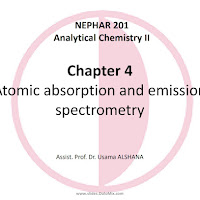Atomic Absorption and Emission Spectrometry is a detailed guide that explores the principles, instrumentation, and techniques used in atomic spectroscopy. It covers theoretical concepts, instrument design, and methods to control analytical interferences. This resource is invaluable for students and professionals in analytical chemistry and environmental science.
Related Atomic Spectroscopy, Analytical Chemistry, Environmental Science, Instrumentation, Spectrometry Techniques, Analytical Interferences, Atomic Absorption, Atomic Emission.
Overview of Atomic Absorption and Emission Spectrometry
Atomic absorption and emission spectrometry are powerful analytical techniques used for quantifying elements in samples. They rely on the interactions of light with atoms in their gaseous state, either by measuring light absorbed by atoms (absorption) or light emitted by excited atoms (emission).
Atomic Absorption Spectrometry (AAS)
Principle:AAS measures the concentration of atoms by detecting the absorption of light at specific wavelengths. A hollow cathode lamp emits light characteristic of the target element. This light passes through a sample, and the reduction in light intensity is proportional to the concentration of the element.
Key Features:
- Element Selectivity: Each element absorbs light at unique wavelengths due to specific electron transitions.
- Quantification: The concentration of the analyte is derived from the relationship between absorbance and concentration (Beer’s Law).
Instrumentation:
- Source Lamp: Hollow cathode lamps (HCL) provide sharp, element-specific lines.
- Atomizer: Converts analyte to gaseous atoms (e.g., flame or graphite furnace atomizers).
- Monochromator: Isolates the wavelength of interest.
- Detector: Measures the light intensity.
Types of Atomizers:
- Flame AAS (FAAS): Uses a flame to atomize the sample. Typical fuel-oxidant combinations include acetylene-air or acetylene-oxygen.
- Graphite Furnace AAS (GFAAS): Offers higher sensitivity by atomizing the sample in a graphite tube.
Flames and Atomization:
- Different fuel-oxidant combinations produce varying temperatures and burning velocities.
- The interzonal region of the flame is preferred as it is rich in free atoms suitable for absorption.
Interferences in AAS:
- Spectral Interference:Overlapping atomic or molecular absorption bands.
- Mitigation: Use alternate wavelengths or background correction methods.
- Non-spectral Interference:Includes matrix effects, chemical, and ionization interferences.
- Matrix matching and addition of ionization suppressants (e.g., K, Rb) help address these issues.
Atomic Emission Spectrometry (AES)
Principle:AES measures the intensity of light emitted by atoms in excited states. The emitted light's wavelength identifies the element, while its intensity quantifies it.
Key Features:
- Emission Spectrum: Each element emits characteristic wavelengths based on its electronic structure.
- Inductively Coupled Plasma (ICP): Most commonly used for atomization due to high temperatures and better atomization efficiency.
Instrumentation:
- Plasma Source: Argon plasma generated by a high-frequency induction coil.
- Monochromator: Selects specific wavelengths of emitted light.
- Detector: Records the emission intensity.
ICP Characteristics:
- Argon plasma temperatures range between 6000–10,000 K, enhancing atomization and excitation.
- Suitable for multielement analysis using either sequential or multichannel detection.
Comparison of Techniques
-
Sensitivity:
- GFAAS provides higher sensitivity compared to FAAS.
- ICP-AES is ideal for multielement detection with low limits of detection (e.g., Ca at 0.0001 µg/L).
-
Interference Mitigation:
- AAS uses background correction and ionization suppressants.
- ICP-AES minimizes spectral interference due to high resolution.
-
Applications:
- AAS is commonly used for single-element analysis in solutions or solids.
- AES is suited for simultaneous multielement analysis, especially in environmental and metallurgical studies.
Advanced Concepts
- L’vov Platform in GFAAS: Enhances reproducibility by isolating the sample from graphite tube walls, reducing matrix interference.
- Multichannel Detection in AES: Accelerates analysis by monitoring multiple elements simultaneously.
Conclusion
Atomic absorption and emission spectrometry are essential tools for precise elemental analysis. AAS excels in single-element quantification, whereas AES, especially with ICP, provides robust multielement capabilities. These techniques are indispensable in fields like environmental monitoring, metallurgy, and pharmaceuticals due to their sensitivity, specificity, and adaptability.
Would you like further details on specific components, methods, or applications?
Info!
If you are the copyright owner of this document and want to report it, please visit the copyright infringement notice page to submit a report.

